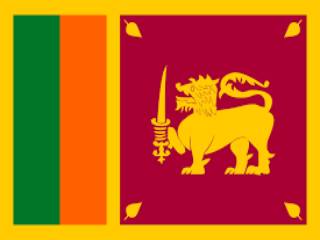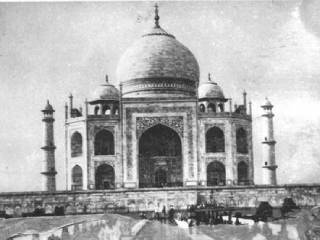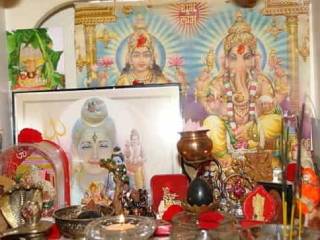Vaishakh Krushna Ekadashi
By Prafull Goradia
Recently, Shahi Imam Syed Ahmed Bukhari, said that the time had come to float a new political party led and commanded by Muslims to address their problems. The call was for a party of the Muslims, by the Muslims, for the Muslims. If his wish came true, a re-enactment of what happened a century ago would begin. In December 1906 at Dacca under the presidentship of Nawab Salimullah the All India Muslim League was founded. In the course of the next 41 years the League succeeded in dividing India into two countries; Pakistan as a homeland for Muslims and Hindustan meant for all the non-Muslims. What was Quaid-e-Azam Jinnah’s scheme and what was recommended by BR Ambedkar, we can discuss later along with the pros and cons of Bukhari’s proposal.
In 1909 the Morley Minto Reforms acceded to the League’s demand for separate electorates for the Muslims as well as reservation of seats in legislatures and jobs in Government. In 1916 the Lucknow Pact was signed between Jinnah, representing the League, and Bal Gangadhar Tilak, leading the Congress. The Pact conceded weightage of seats for the Muslims in the legislatures. Weightage meant, for example, Muslims were given 33 per cent of the seats in the Bombay Assembly although their population was only 14 per cent.
The League made its green flag fly so high that Muslim demands got increasing prominence in the politics of India. One result was that the British Government held three Round Table Conferences in London between 1930 and 1932. They were presided over by Prime Minister Ramsay MacDonald. When no agreement emerged, he lost his patience and announced his notorious Communal Award. In effect, in provinces where Muslims were 25 per cent or more, they were given 50 per cent of the legislative seats; clearly a victory for the League’s agenda. The growing Muslim success led to several developments. One was that poet Iqbal’s Sare jahan se achha Hindustan hamara turned into Pakistan hamara.
At the 1930 session of the League at Allahabad, Iqbal announced his scheme for two separate homelands within a very loose confederation. Rehmat Ali, a scholar at Cambridge, innovated in 1933 the name Pakistan. In turn these events inspired Jinnah as president of the League to propose the Pakistan Resolution at its Lahore session on March 23, 1940. Shrewd as Jinnah was, he concealed his hurry to make the British leave India which in turn provoked the Congress to insist on their quitting the country. No doubt Jinnah’s priority was partition rather than independence. To finally convince the British that the Hindus and Muslims cannot co-exist in one country, he gave a call for Direct Action which was an euphemism for Muslim engineered riots against Hindus beginning August 16, 1946 at Calcutta. Meanwhile, the principle of parity applied to the formation of the Interim Government appointed preparatory to the British departure, demonstrated that Hindus and Muslims could not work together. The inexorable result was the vivisection of India in August 1947.
Jinnah and all the other seven leaders of the League wanted not only the division of the country but also a transfer of populations whereby all the Muslims would gather in Pakistan and all the non-Muslims would live in Hindustan. Sir Firoze Khan Noon, later a Pakistani Prime Minister, went to the extent of telling the Bihar MLAs on April 8, 1946 that if the Muslims were not given over to Pakistan, they would re-enact the murderous orgies of Changez Khan and Halaqu Khan. Ambedkar agreed with Jinnah that Hindus and Muslims could not live together. An exchange of population a la Greece/Turkey in 1923 was the obvious answer. Bukhari’s proposal is an implicit confirmation of the thesis that Muslims cannot co-exist with others. Unfortunately, in 1946/47 the Congress was in the hypocritical mood of impartially representing all communities. In the bargain it did not accept the Jinnah-Ambedkar contention. Today, however, the party openly declares ‘Muslims first’ and allocates on priority the national resources to this one community.
If Bukhari’s desire were fulfilled and most Muslims join his party the other organisations would be bereft of their direct support. Such a situation could well bring an end to vote-bank politics. Mr Mulayam Singh would cease to be referred to as Maulana while Mr Lalu Prasad Yadav would no longer campaign with a look alike of Osama bin Laden. Sir Cyril Radcliffe, who drew the dividing line between the two countries at partition, had provided for more territory than the Muslim numbers justified. So that today Pakistan has about 180 people to a square kilometre whereas India has approximately 350. There is plenty of land to complete Jinnah’s agenda of partition.
Source: Daily Pioneer

 Mizoram: EC accepts Christians’ demand to defer counting on Sunday, but what if Hindus had made a similar demand?
Mizoram: EC accepts Christians’ demand to defer counting on Sunday, but what if Hindus had made a similar demand? Sign Petition : Immediately repeal the draconian and unconstitutional ‘The Waqf Act, 1995’
Sign Petition : Immediately repeal the draconian and unconstitutional ‘The Waqf Act, 1995’ Shriram : Sri Lanka’s saviour
Shriram : Sri Lanka’s saviour Why it is so cool to malign Hindu gods and goddesses, but it may not be that easy now
Why it is so cool to malign Hindu gods and goddesses, but it may not be that easy now Shocking Truth of Taj Mahal exposed by Late Pujya P. N. Oak
Shocking Truth of Taj Mahal exposed by Late Pujya P. N. Oak How are Hindus treated in states where they are in a minority?
How are Hindus treated in states where they are in a minority?